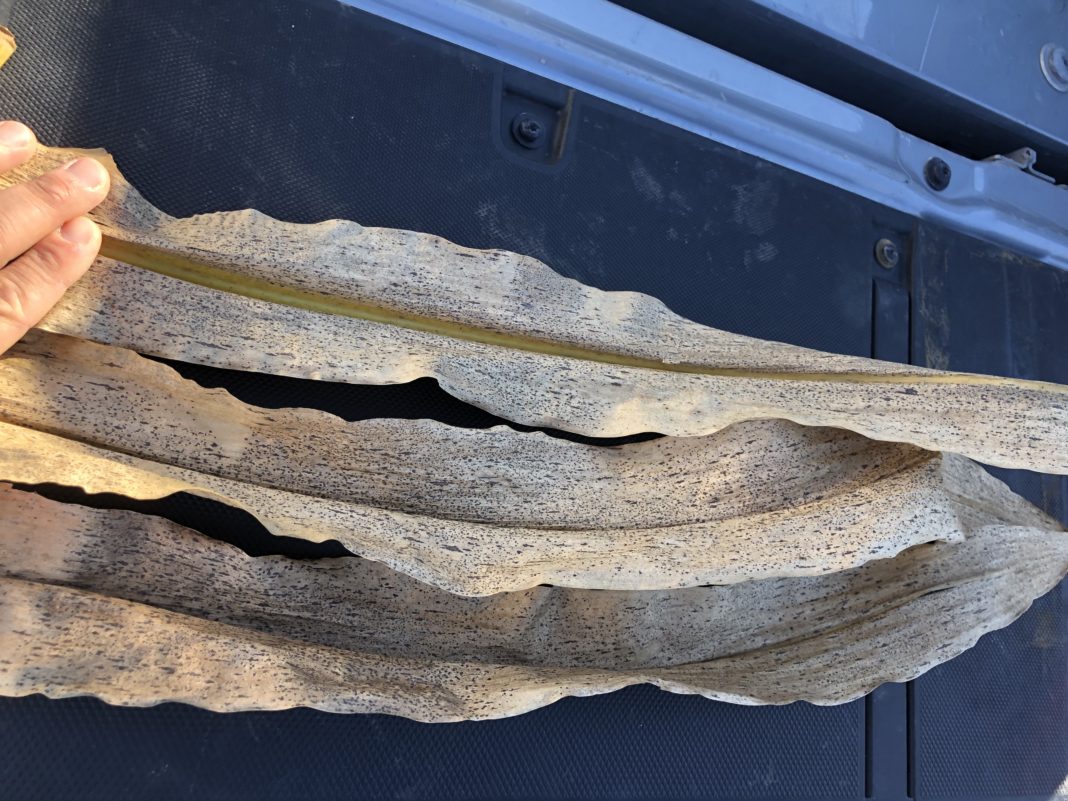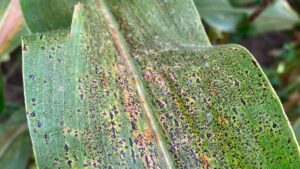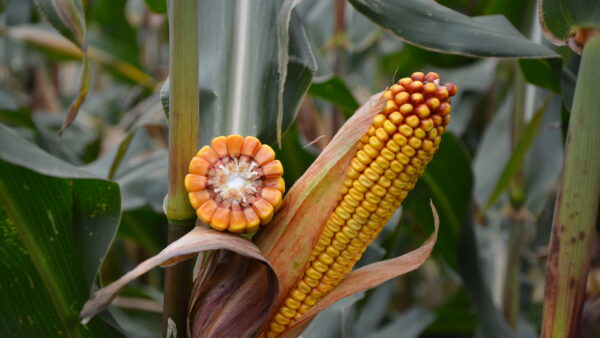Like the substance for which it’s named, tar spot is sticking around.
When tar spot blew into the Midwest in 2015 from South America, farmers were understandably concerned about what this budding disease could mean for their crops. With nearly six seasons of the disease under their belts, seed companies and researchers are finding what it takes to protect corn from the pathogen.
Understand the Disease
Like all diseases, tar spot needs the complete disease triangle to infect plants. The spores need to be present in corn fields or blow in through the air, and it favors cool, wet conditions.
“I have never seen a disease as crippling as tar spot,” says Steve Wilkens, Golden Harvest agronomy manager. “It’s like, you can go to church Sunday and come home, and the crop is dead.”
He covers most of the Midwest and says the disease can rob the crop of around 50% of yield potential in severe infestations.
“Plus, if it comes in late, it might not have as big, if any, impact on yield but it can lower stalk integrity,” Wilkens says. “Which we all know slows down harvest and does lead to more harvest loss.”
Over the past six seasons, 2018 and 2021 have been the most favorable for tar spot. While it can be found in other states, Iowa, Illinois, Indiana, Michigan and Wisconsin have recorded the most instances of the disease.
“It’s something that continues to grow and spread broader each year,” says Shane Meis, Wyffels director of research. “But we have to remember the disease triangle needs to be present, like all diseases, so it’s not a guarantee every year.”
Discover Genetic Tolerances
New technologies are enabling researchers to identify solutions faster, at lower costs. This could lead to commercial solutions in as little as five years.
“If we see a small number of major resistance genes that could be, in theory, targeted for gene editing or transgenic events it could be [a faster route to commercialization],” says Addie Thompson, Michigan State Extension corn genetics researcher. “It might have to go through more regulatory mechanisms though. My goal is that using a more recent line of genetics to pull from means the transition is much faster.”
She’s surveying thousands of corn hybrids to identify key genetics that confer tolerance to tar spot. Using phenotypic observations and what they know about genetics, Thompson and plant pathologists at MSU are finding what could become a genetic solution to tar spot.
The hybrids they’re researching are publicly available, including full marker sets. Later this year or early next year, they’ll be publishing their findings including snips that could be used as molecular markers to help with tar spot tolerance selection.
“This first step is finding these kind-of anchor points to give us a more specific area to look,” Thompson says. “It could be that marker, that gene or it could just be something that’s nearby. It’s just an arrow that tells you where to look; not quite definitive yet.”
It’ll help researchers narrow down their options while screening and possibly shorten the time it takes to backcross tolerance into current genetics.
Next Steps
Research is ongoing, from the university level to independent companies, from finding fungicide efficacy ratings to evaluating current and upcoming genetics. It’s not without challenges, though.
“Right now, we don’t have a good way to uniformly inoculate hybrids we want to test for this disease; we rely on field inoculation,” Meis explains. “Artificial inoculation technology has been elusive, so we’re opportunistically taking ratings in fields.”
As research continues, developing an inoculum will enable more uniform testing. For now, many are taking advantage of natural infestations to observe the crop’s genetic tolerances.
“We’ve tested products in the tar spot ‘hotbed’ of northern Indiana, western Michigan, northern Illinois and southwest Wisconsin,” Wilkens says. “We’ve found commercial and pre-commercial products that do really well with it.”
In terms of public research, Thompson and the team she works with will soon finalize their results and share them. This could help catapult genetic tolerance to the next level because of potential molecular markers.
“We have to remember, this is just a new disease to the U.S., not a new disease,” Thompson says. “There’s been quite a bit of breeding for it already in tropical varieties. We just need to find a way to get some of that into relevant genetics.”
However, the tropical options are more difficult to work with than the U.S. public varieties they examined. Regardless of where any potential tolerance comes from, it’ll take a few years to get integrated into current genetics.
Reminder: How to Identify Tar Spot
Tar spot is caused by the Phyllachora maydis fungus and has key identifying characteristics that differ from common U.S. disease such as gray leaf spot, Northern corn leaf blight and rust.
First, look for black spots on the leaves and husks. These hard, black spots can (but don’t always) have a tan halo, according to Michigan State University Extension. These are called fish-eye lesions.
The tar spots are reproductive structures that create and spread thousands of spores. The spores can and do overwinter in the black spots to be released the following season. Right now, there is no noticeable benefit to rotating to soybeans, however, as the spores can be airborne.
Researchers at MSU have found tar spot as early as July in some seasons. However, they recommend agronomists start scouting around silking at minimum.













